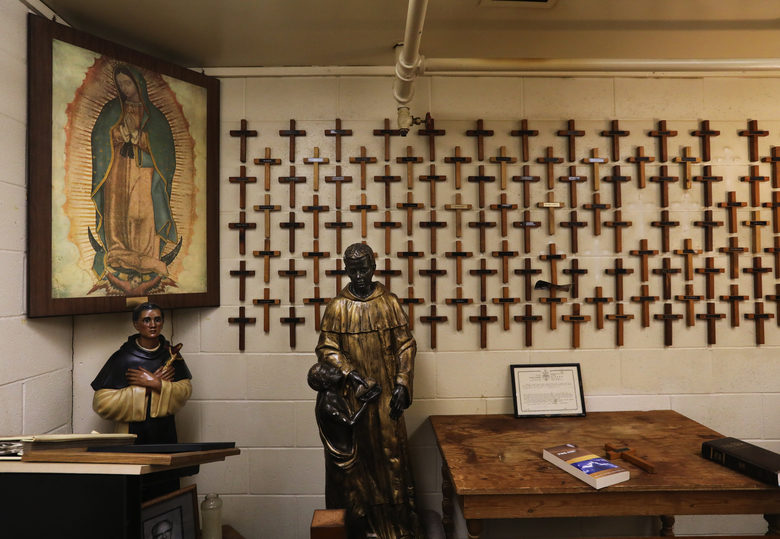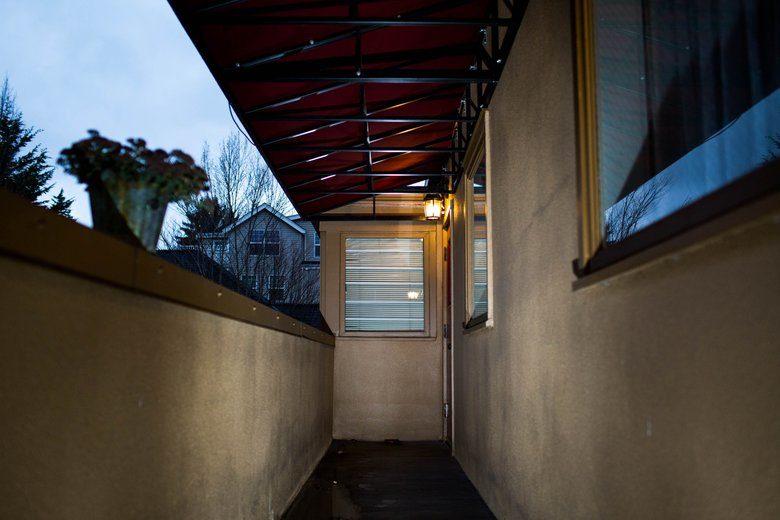
The toll of the region's homelessness crisis has been building since early in the year.
By April, the list of people who died while homeless or without a verifiable address reached 48. In September, it passed 93, the previous year's total.
By the close of November, the King County medical examiner's list reached 133, surpassing the previous high of 111 from 2006.
The list is a grim indicator of what many people living without shelter and those involved in the region's fight against homelessness both acknowledge: For all the progress made toward the goal of making homelessness "rare, brief and one-time," the reality on the streets remains stubbornly unchanged.
With an estimated snapshot count of 11,643 - more than 5,000 of whom were living outdoors during the annual survey - King County has the third-largest concentration in the nation of people living in homelessness.
Major cities across the West Coast are experiencing similar problems, with yearly increases in Portland, Los Angeles and San Diego.
But despite the rise in deaths and overall number of homeless people, other figures show Seattle and King County were able to deliver in 2017 on the headway promised two years ago, when both governments declared a state of emergency over homelessness.
From October 2016 to September 2017, more than 6,000 single adults and families moved from homelessness to some form of stable housing, according to recent data from All Home, the county's coordinating agency for homeless services. The rate of people returning to the streets within a year of receiving services has been cut in half.
Kira Zylstra, deputy director of All Home, said those strides are evidence that efforts to ease access to shelter and housing programs and make performance-based funding decisions is working.
"At the highest levels, what we've all come to agree on is that we cannot continue to do things as we always have," Zylstra says.
A change in strategy
It remains to be seen whether those new strategies will make a significant dent in the number of people living rough on the county's streets and greenbelts. Scheduled for Jan. 25, the next Point in Time count, during which volunteers and paid canvassers fan out across the county to survey the local homeless population, will put those new efforts to the test.
How local elected officials handle the problem in the coming year also will fall under scrutiny. In a recent interview, Seattle Mayor Jenny Durkan tried to strike a balance between confidence in the city's current approach - using data to determine which programs are working and which aren't - and a pragmatic outlook on when the crisis might end.
"We need to stop treating this as if there's an unrealistic political deadline," Durkan said. To make progress "we need to make sure we have strategies in place that demonstrably help people," she added.
Still, the departments that Durkan's still-young administration oversees have set what may be lofty goals - with deadlines - based on the new strategies. In November, when Seattle rebid $34 million in contracts to providers of homelessness services, Seattle Human Services said it planned to more than double the number of people moved out of homelessness and into stable housing by the end of next year - from 3,026 in 2017 to 7,399 in 2018.
To reach that target, Seattle has pushed through a long-planned pivot from emergency shelters where people can sleep overnight to one-stop "enhanced" facilities that give them 24-hour access and counseling to help transition into housing.
Two such shelters opened to clients this year, both with significant new funding from the city. The results so far are mixed. Moving people who sometimes have spent years on the streets is difficult work, and the shelters have not been able to move clients into housing as quickly as hoped.
For the strategy to succeed, the city's new investments in short-term rental subsidy and prevention programs designed to keep people from ever becoming homeless will also have to pan out. Durkan said the city will continue to monitor its contracted providers to ensure they do succeed.
Nan Roman, president of the National Alliance to End Homelessness in Washington, D.C., said Seattle's plan has to create additional housing.
"What you're seeing there is what you're seeing across the country, where housing expenses are shooting past what people can afford," she said. "If we don't do something about it, the numbers will keep going up and up."
King County Executive Dow Constantine said that successfully reducing homelessness will require local leaders to continue to look at what's causing the issue.
"That means looking upstream at preventing people from ever falling into homelessness and rapidly helping them back into stability when they do," he said.
Beyond the numbers
As the medical examiner's list grows, the urgency to find solutions continues to mount.
The list itself comes with caveats. It includes people who died in hotels or hospital emergency rooms whose addresses could not be verified. Others who actually died while living on the street may not be included because their deaths weren't handled by the county office.
Still, some of the people on the list literally died on the streets. Disease and overdoses claimed some. Several others died by homicides and suicide.
What the statistics don't reveal is the complexity of the lives they represent.
Robert Kiffe would have turned 47 on Dec. 19. A month earlier, a Seattle police officer found him at a Madison Valley office park. He was pronounced dead at the scene. County medical examiners later determined that he died from hypothermia.

The couple adopted Robert at 3 years old, after he'd been removed from an abusive home. As a baby he was diagnosed with fetal alcohol syndrome. In years following, doctors diagnosed him with schizophrenia and a laundry list of other mental issues, his parents said.
When he turned 14, Shari says, Robert began running away from home. Over the next 30 years, he'd bounce between their home in the Puget Sound area, to Seattle, to California and back again, accumulating arrests and a worsening habit of self-medicating.
Although he sometimes found housing, Robert couldn't maintain it. He spent three years in a supportive housing facility in Seattle, but he lost the apartment after an alcohol-fueled incident, his parents said.
"He had so many challenges," Paul said. "It seemed like he was always running from one agency to another to get help, but it never took."
After exhausting his options, he'd often bus back to his parents' home in hope of starting over, only to eventually leave again. A few years back, during one of those visits, Paul asked his son why he couldn't just remain with them.
"He told me it's because he had rabbit blood," Kiffe remembered. "No matter how hard we tried, he couldn't settle down."



[Link]